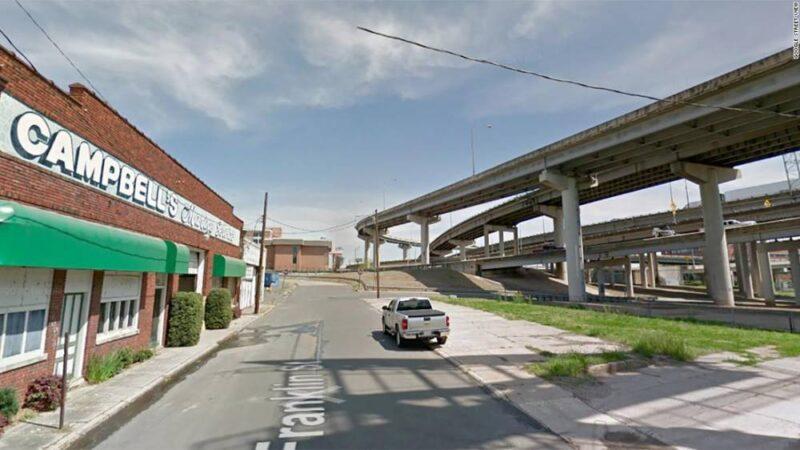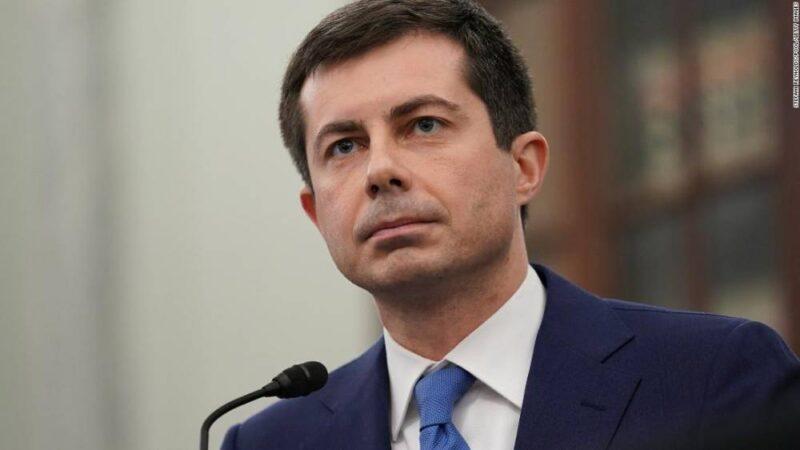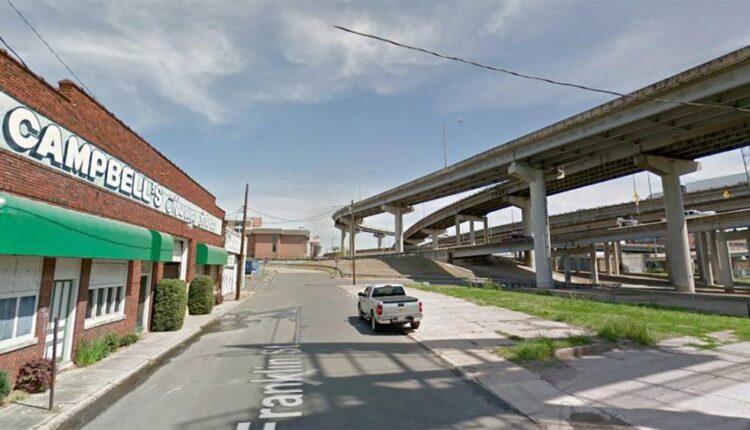(CNN)Njeri Camara, 61, can’t visit the Shreveport, Louisiana home where she was born. Like many Black homes and neighborhoods across the country in the 1960s, it was bulldozed to clear space for highways.
Camara says her parents moved when she was a baby to another Shreveport neighborhood, Allendale, where she still lives. But now her current home is at risk of being bulldozed so that a second highway, Interstate 49, can connect directly through the city. The Shreveport leaders who want to trade Camara’s home for a highway are embracing a Dwight Eisenhower-era belief in the almighty good of the Interstate Highway System. The sentiment lingers even decades after the underbelly of urban highways became clear: pollution, noise, racism, displacement and congestion. For critics, Eisenhower’s highways were a stake driven through the heart of healthy cities.

A Google Street view of Shreveport, LA downtown area abruptly ending where it meets the highway.Now many of these urban highways are crumbling, and a groundswell has emerged in cities nationwide to tear them down. There are 30 local, citizen-led campaigns to convince officials to remove highways, according to Ben Crowther, who leads the “highways to boulevards” program at the Congress for New Urbanism, a think tank devoted to walkable urban environments. A Senate bill introduced last year called for $10 billion to be spent on urban highway removals. Even Detroit, perhaps the most car-dominated US city, is considering removing a stretch of highway.”Now more than ever, in the age of Covid, people are rethinking how streets and the infrastructure around them serves the people who live in cities,” Crowther told CNN Business. Read MoreActivists see highway removal projects as playing a role in racial justice, and making some sort of amends for families displaced decades ago, like Camara’s. US Secretary of Transportation Pete Buttigieg is among those who have spoken out on the history of Black neighborhoods being disproportionately divided by highway projects, and has called for righting those wrongs. But experts say replacing urban highways with boulevards offer no guarantee of racial justice, and risks making things worse. Rising land values can trigger gentrification, damaging communities of color that already suffered when the highways were first built. “We need to think about not just ‘let’s get to a boulevard,’ but some moment of restorative justice for the folks that suffered, as well as some preservation and prevention for the folks who are still there,” said Calvin Gladney, CEO of Smart Growth America, a community development organization.
The neighborhood that was
Detroit resident Kenneth Cox, 87, can remember hearing a young Aretha Franklin singing at her father’s New Bethel Baptist Church located in the neighborhood of Black Bottom. He recalled to CNN Business how he’d frequent the neighborhood’s indoor skating rink, and loved the vanilla ice cream at Barthwell’s, a chain of drug stores.”It was a black business mecca,” recalls Cox of Black Bottom, whose Gotham Hotel, a ritzy destination, attracted stars like Louie Armstrong and Duke Ellington. But as the Interstate Highway System was mapped out, Black Bottom was in its crosshairs.There were no Black people on the Detroit city council at the time, according to Jamon Jordan, a Detroit historian. The city’s five-member housing commission had a single Black member, who soon resigned in protest, according to Jordan.Black Bottom was bulldozed in the 1960s to make way for Interstate 375. Fast forward to today, and Detroit and the state of Michigan are planning to tear down Interstate 375 and convert it to a boulevard. But for many Detroiters, the project has nothing to do with making amends for the past.PG Watkins, who leads Black Bottom Archives, which chronicles Detroit’s history, says some residents welcome the removal to get the neighborhood thriving again, and others feel the project isn’t being done for Black Detroit, but white residents who may move in.”A lot of folks are like ‘We just need to be honest about why this is actually happening,’ ” Watkins said. Mary Sheffield, the Detroit council member who represents neighborhoods near I-375, described the project to CNN Business as an effort by planners “to attract a different segment of society who in recent history have not been residents of the city.” Stephanie Chang, a Michigan state senator who surveyed residents in largely Black neighborhoods near I-375, found that most do not want the highway removed. A spokesman for the Michigan Department of Transportation, which is leading the project, told CNN Business that the project isn’t about gentrification, but mobility.”It’s taking a 60-year old freeway with outdated interchanges, deteriorated bridges and pavement, and finding an appropriate solution which considers safety, operations and improved connectivity for all users,” said spokesman Rob Morosi.The department is working with the Detroit city government, he added, which has programs and policies to address rising property values.A spokesman for Detroit Mayor Mike Duggan, asked about any steps to make sure the I-375 project benefits nearby Black residents who may be at risk of gentrification, suggested that the project is not such a case.”The proposed 375 project doesn’t involve the displacement of any people — it involves potential displacement of a commuter freeway by a surface road,” the mayor’s spokesman, John Roach, said in an email. “I’m not aware of potential commuter inconvenience being a recognized form of gentrification.”But Michigan’s Transportation Department has said that property values and rents may increase in residential areas adjacent to I-375, indicating the project may trigger gentrification. The spokesman did not respond to requests for comment on the department’s findings.

Transportation Secretary Pete Buttigieg listens during his confirmation hearing earlier this year. (Photo by Stefani Reynolds/Getty Images)Gentrification seems to be on Buttigieg’s radar, but how he will address it is unclear.”There has been a legacy of misguided investments and missed opportunities in federal transportation policies that reinforce racial and economic inequality,” Buttigieg said in a statement to CNN Business. “We must take care that these mistakes are not repeated in projects now underway.”Buttigieg declined to detail specific steps that he recommended be taken to prevent further damage to communities already negatively impacted by highways. He also wouldn’t say if he would intervene and halt the I-49 project in Shreveport, which awaits the federal government’s approval. But he said that projects in the pipeline are being evaluated on a case-by-case basis to determine if the department can intervene to address communities’ concerns. Jordan, the Detroit historian, finds that when he gives tours or lectures, few people know the history of Black Bottom and Detroit’s Black businesses and institutions. He’s used to hearing from people who’ve heard that “Black people messed up the city,” he said — a belief that the city was great when Henry Ford was in Detroit, and that things were great until Blacks took over the city.
He has called for the government to reach out to Black businesses damaged when the neighborhood was destroyed more than 60 years ago, so they can be among the beneficiaries of the redevelopment. And Jordan added that a historical marker and a community center should be built in the new neighborhood to educate people about Black Bottom. “There has to be some kind of recognition of what happened,” Jordan said. “There has to be some coming to grips with this story.”
Source: edition.cnn.com

